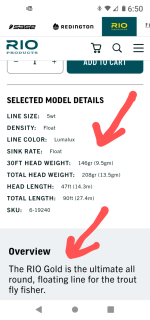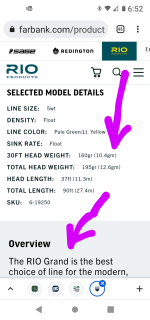A
a23fish
Active member
- Joined
- Jan 9, 2021
- Messages
- 210
I took my old Sage DS 8'6" 5Wt out today since it has been getting ignored & dusty lately. The majority of my fly fishing for the past year or so has been with my beginner Orvis Encounter 9' 5Wt. rod, and I'm getting conditioned to casting that. Conditioned, mind you, not good. But used to it nonetheless.
So the old Sage was a bit of a wake up call. It casts much differently. Slower, softer action. I sometimes found myself beginning my forward cast before the back cast had finished loading. A case of letting my mental timing overriding my physical feel of the rod flex.
Which got me to thinking. Although the rod is labelled 5/6 Wt., since it is slower & softer would it actually be better if I dropped down to a 4Wt. line? Or go up to a 6Wt.? Or am I overthinking this issue and simply need to remember it casts differently and use it more with the 5Wt. line?
So the old Sage was a bit of a wake up call. It casts much differently. Slower, softer action. I sometimes found myself beginning my forward cast before the back cast had finished loading. A case of letting my mental timing overriding my physical feel of the rod flex.
Which got me to thinking. Although the rod is labelled 5/6 Wt., since it is slower & softer would it actually be better if I dropped down to a 4Wt. line? Or go up to a 6Wt.? Or am I overthinking this issue and simply need to remember it casts differently and use it more with the 5Wt. line?






